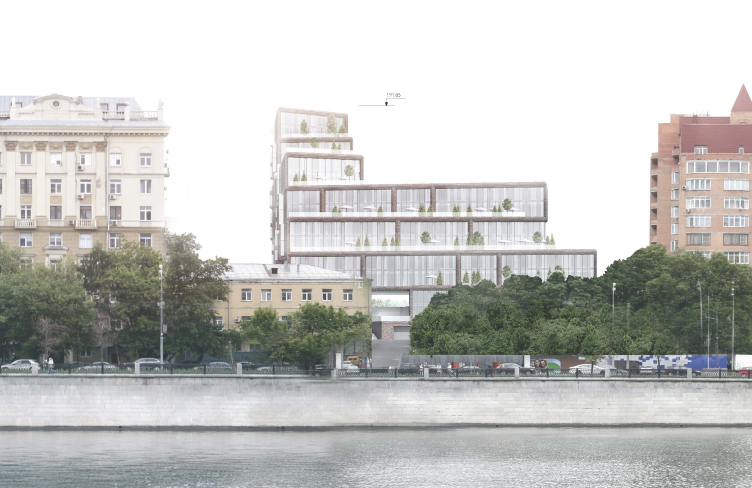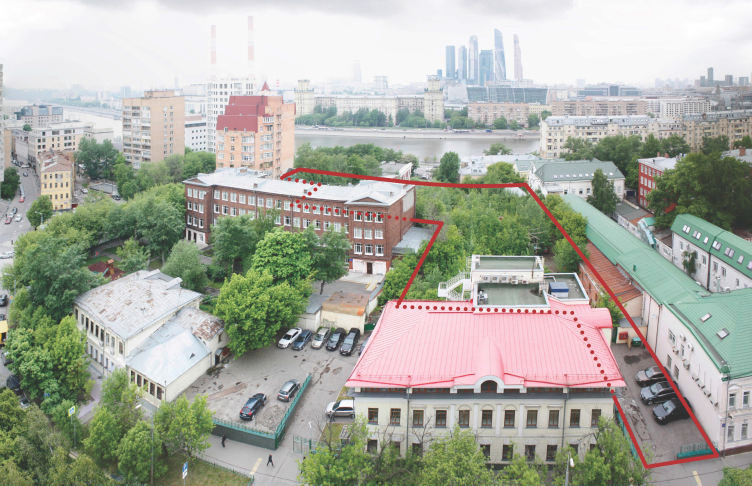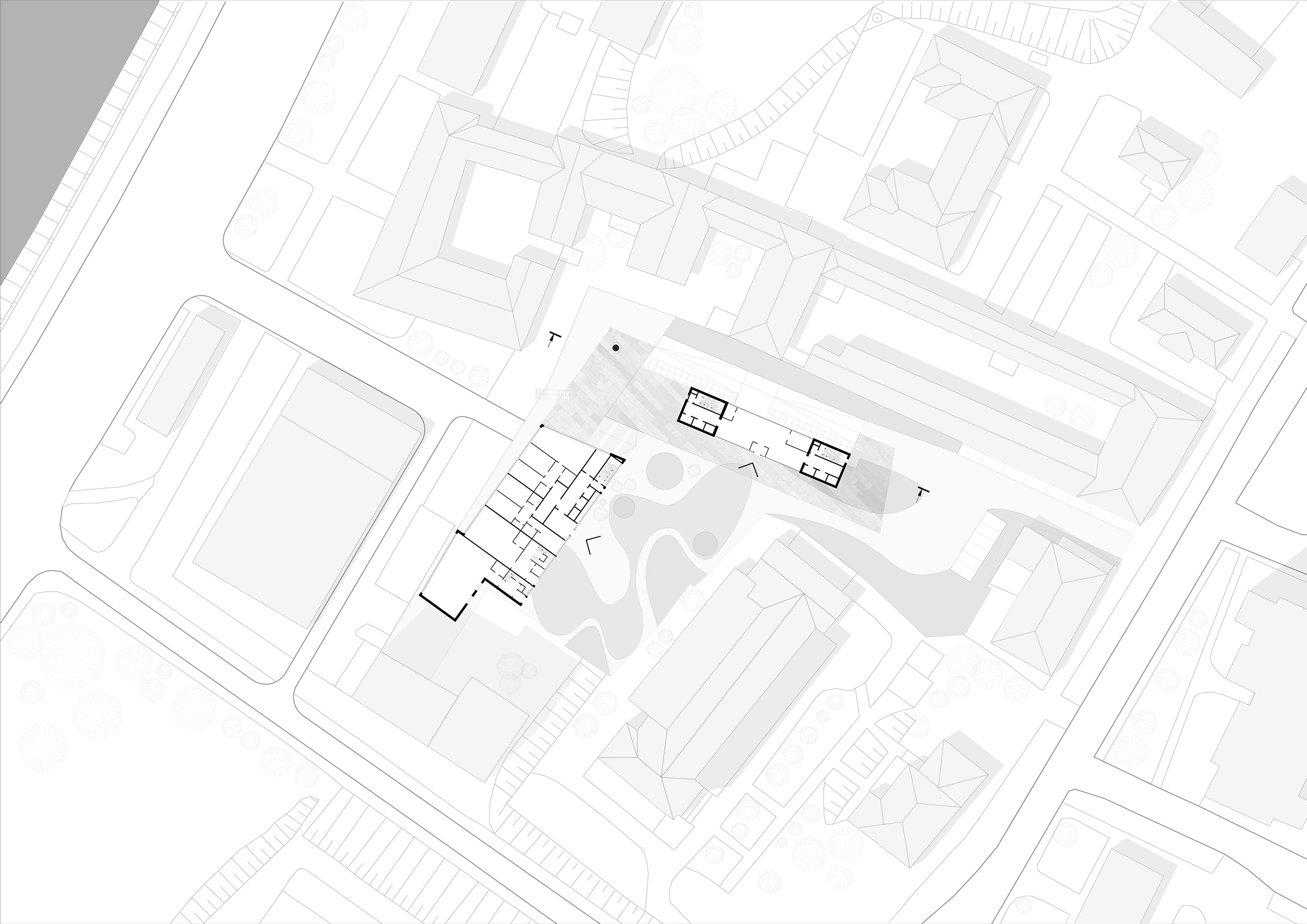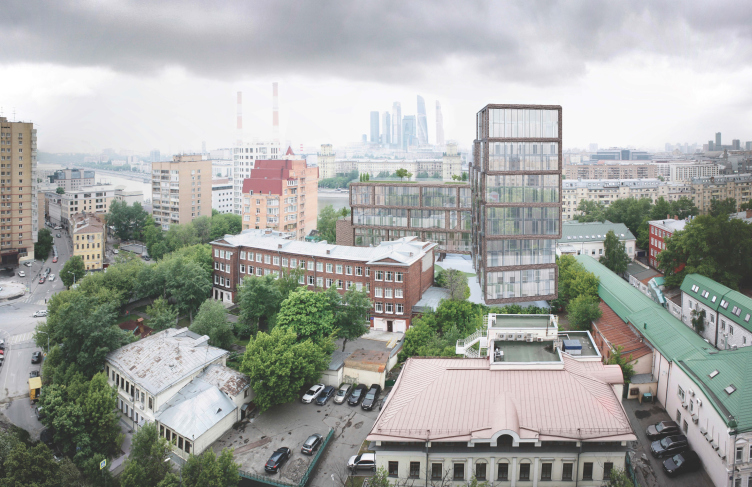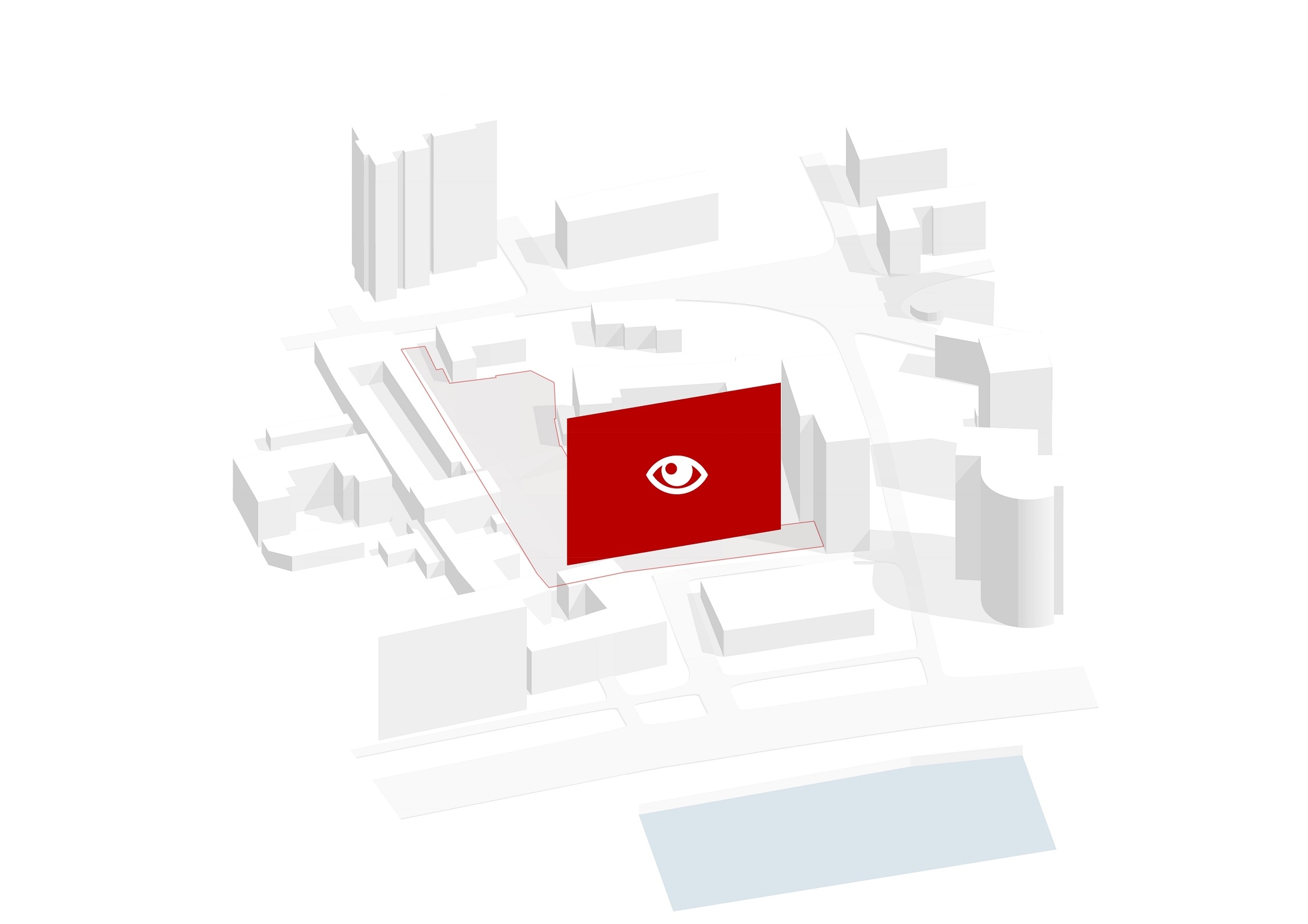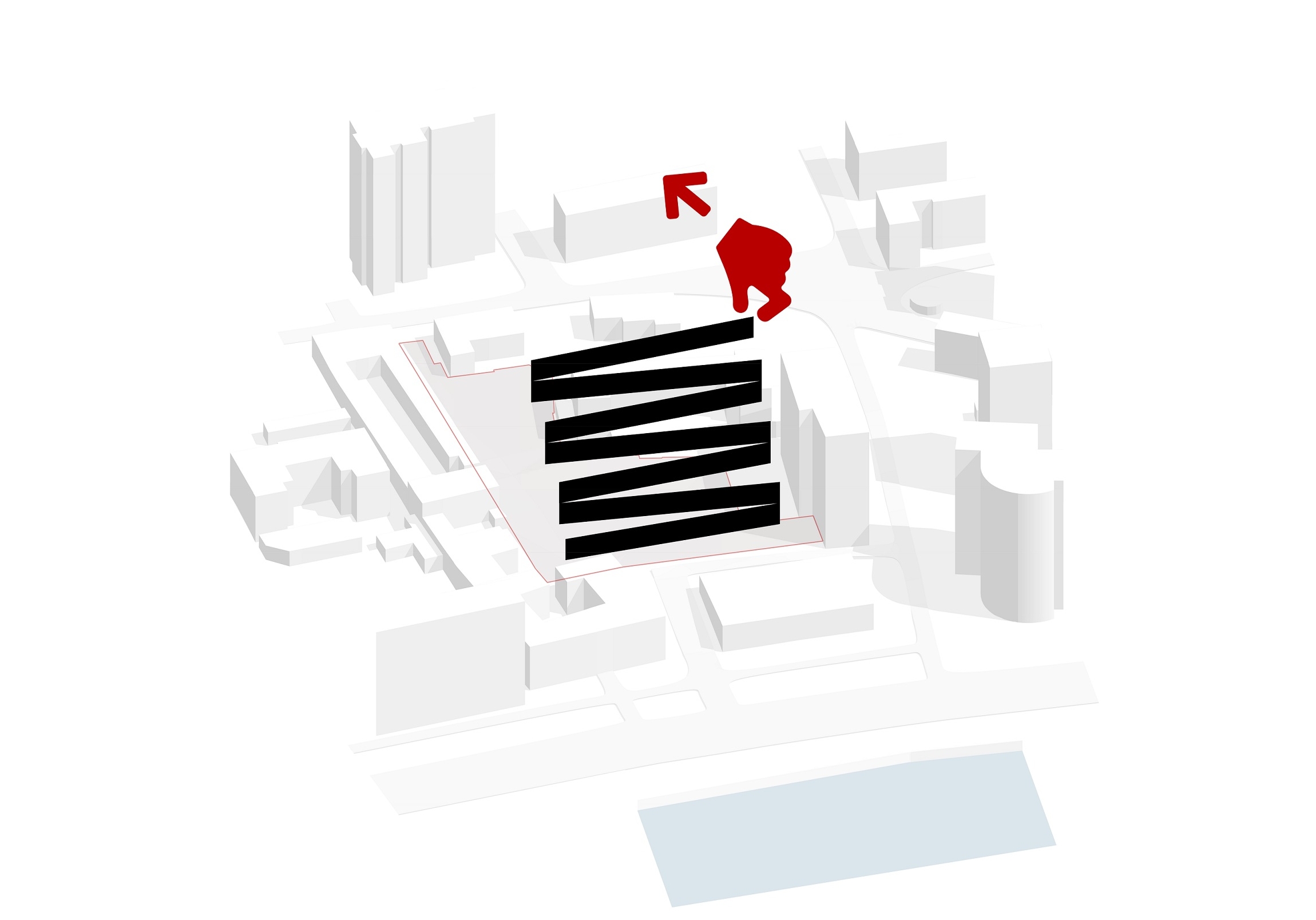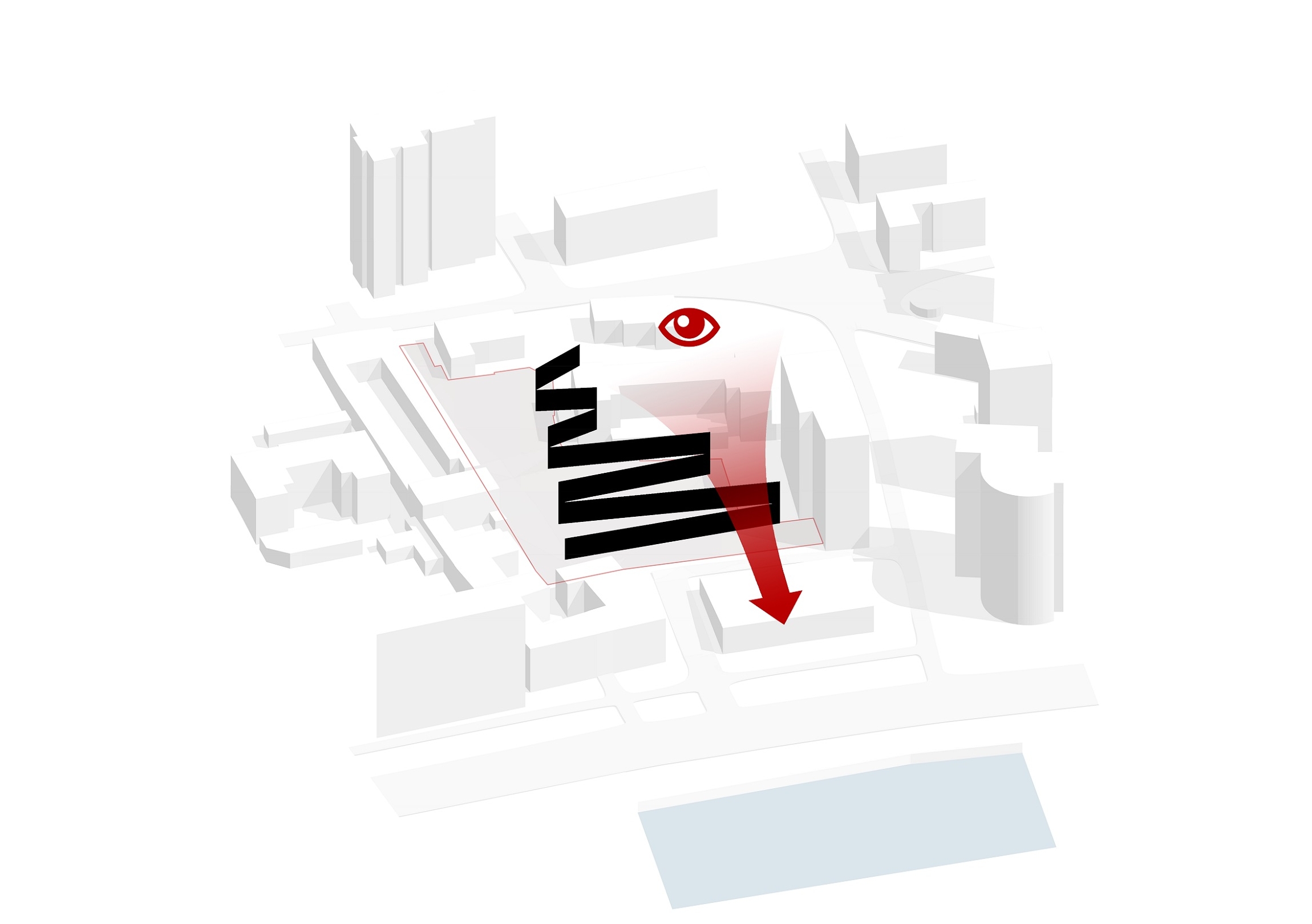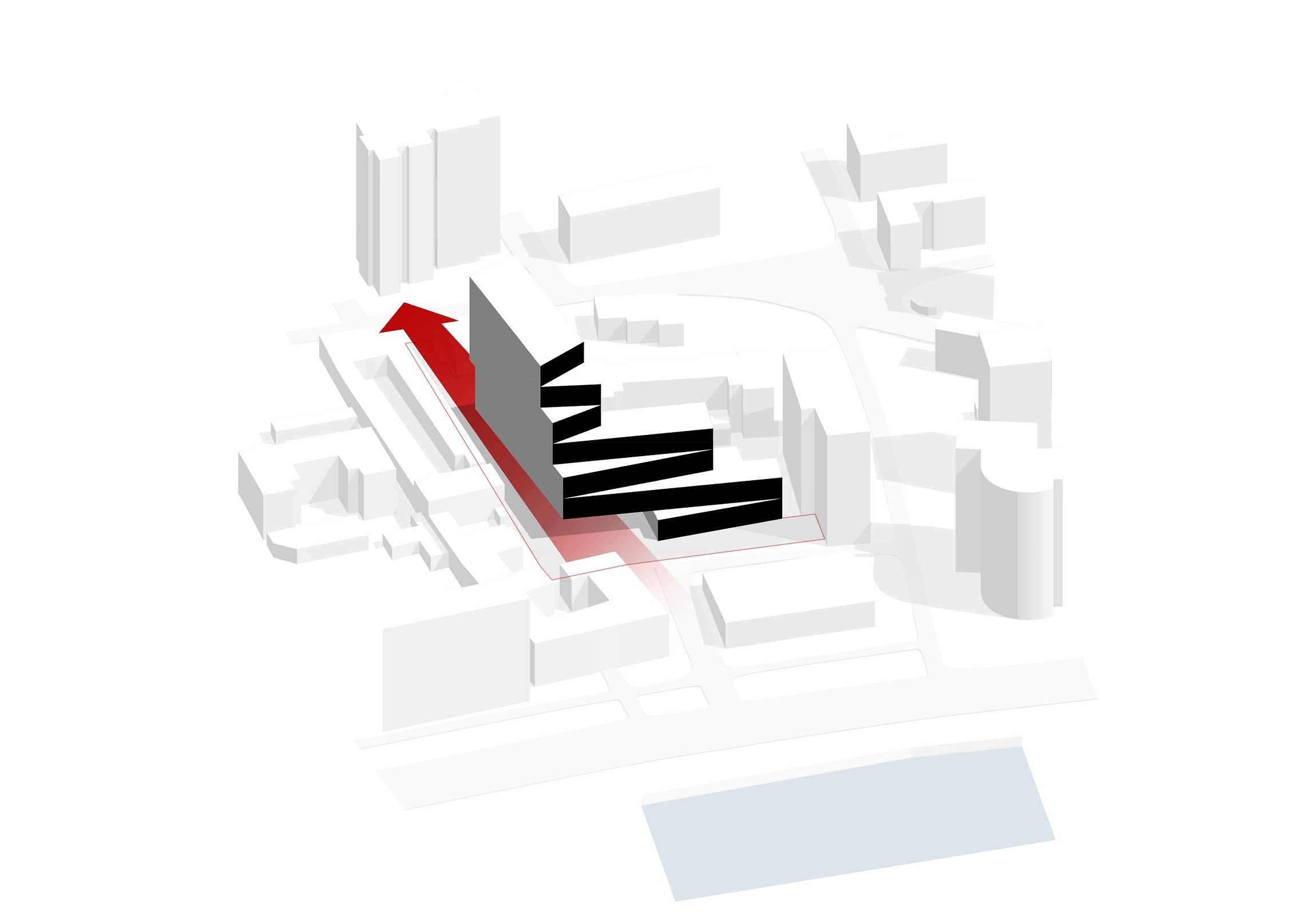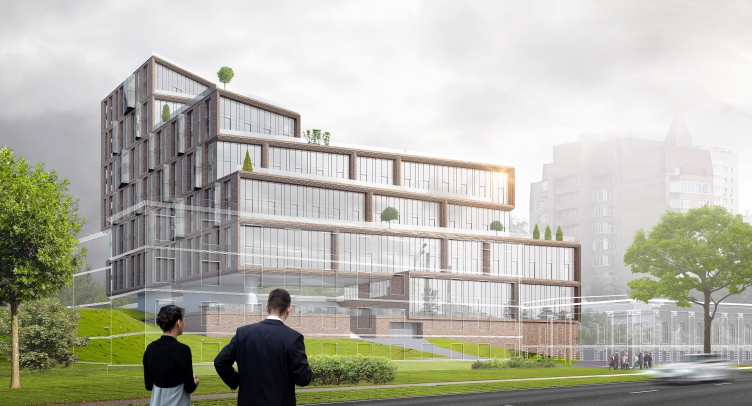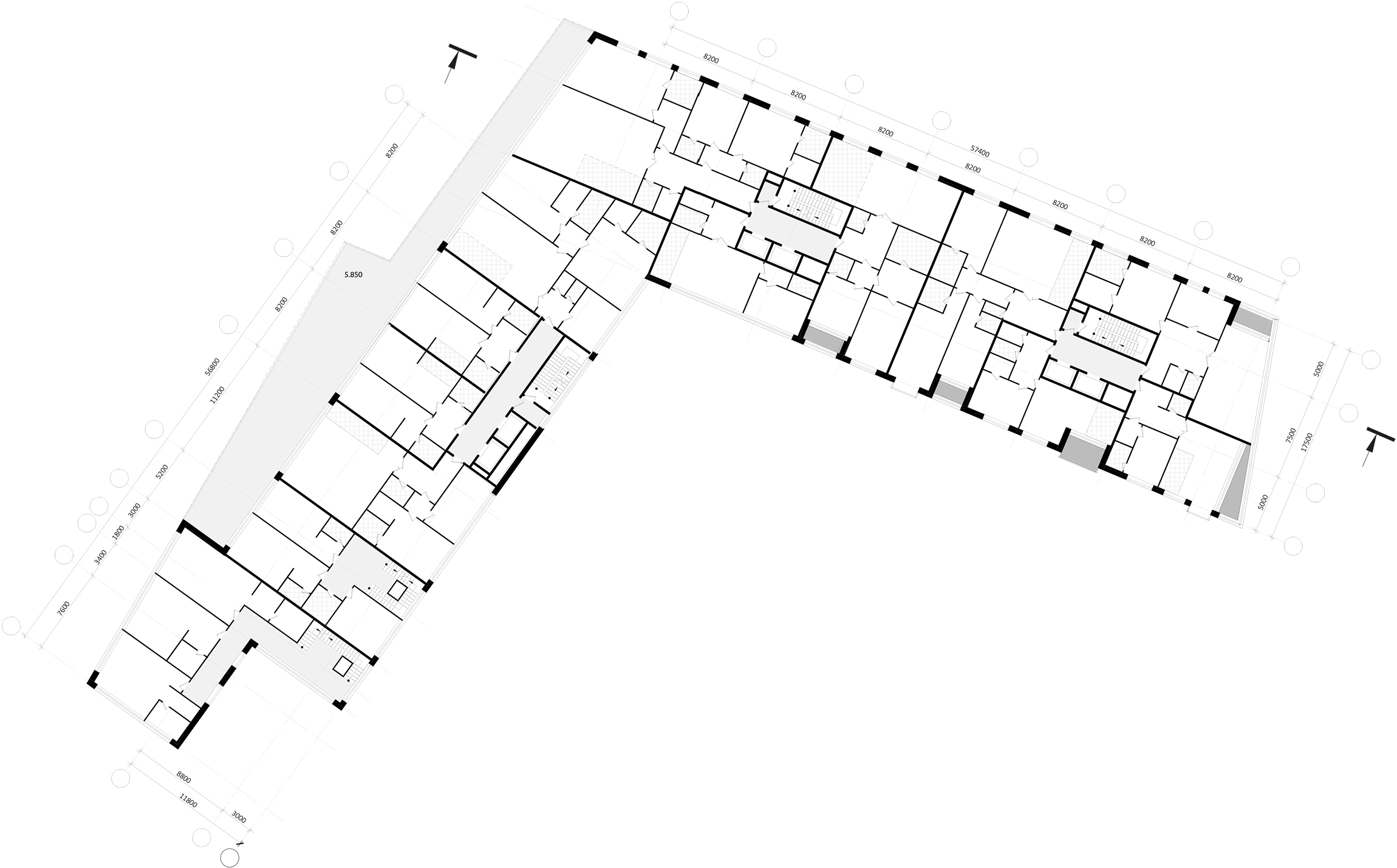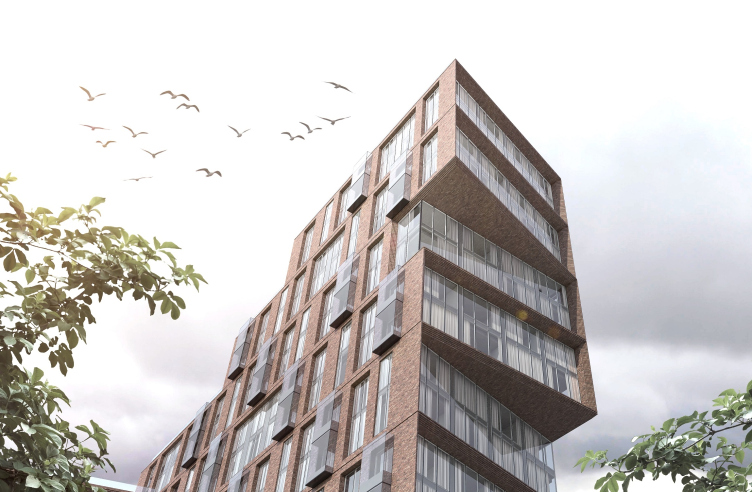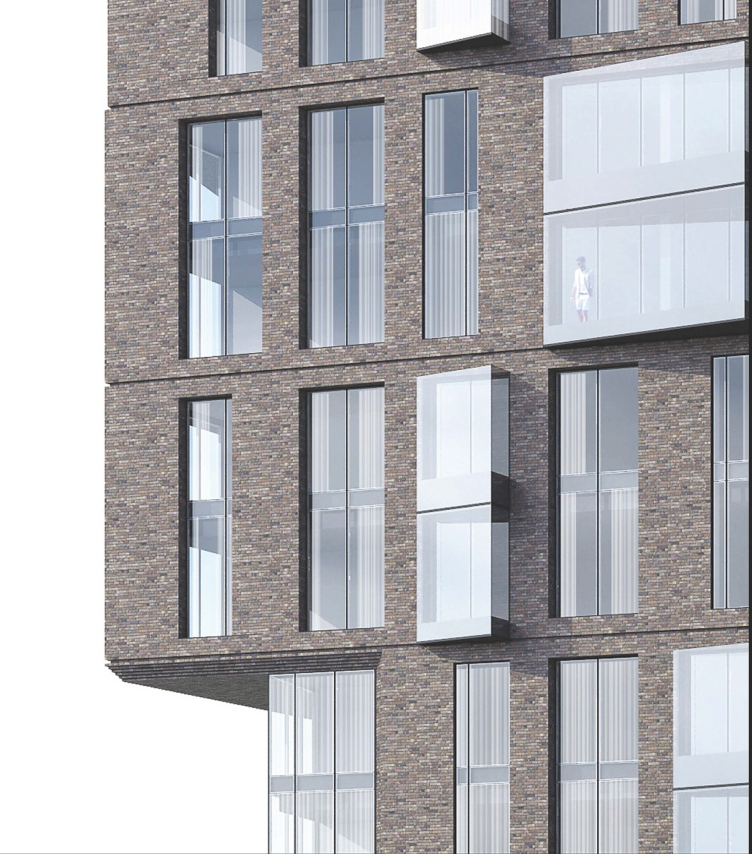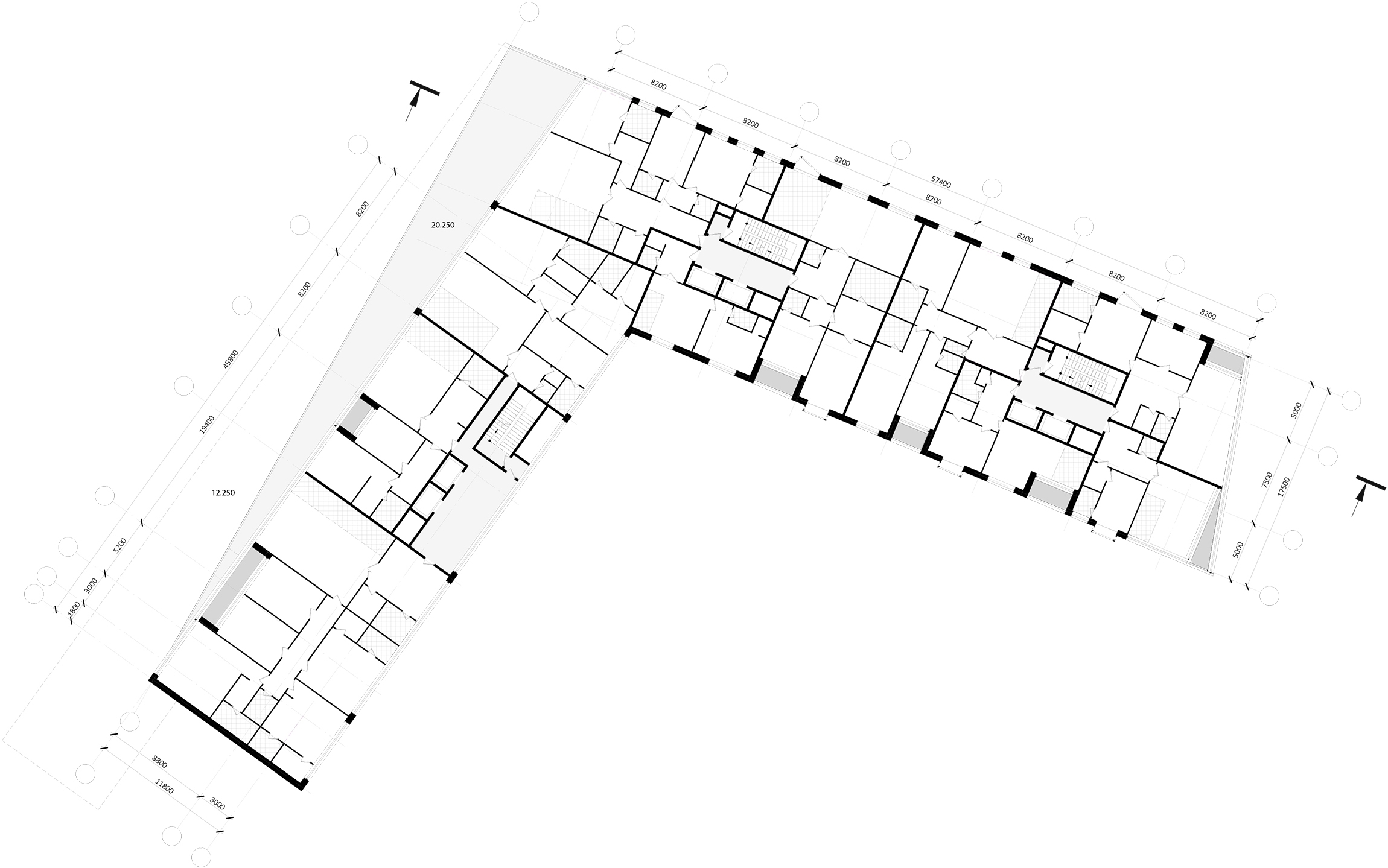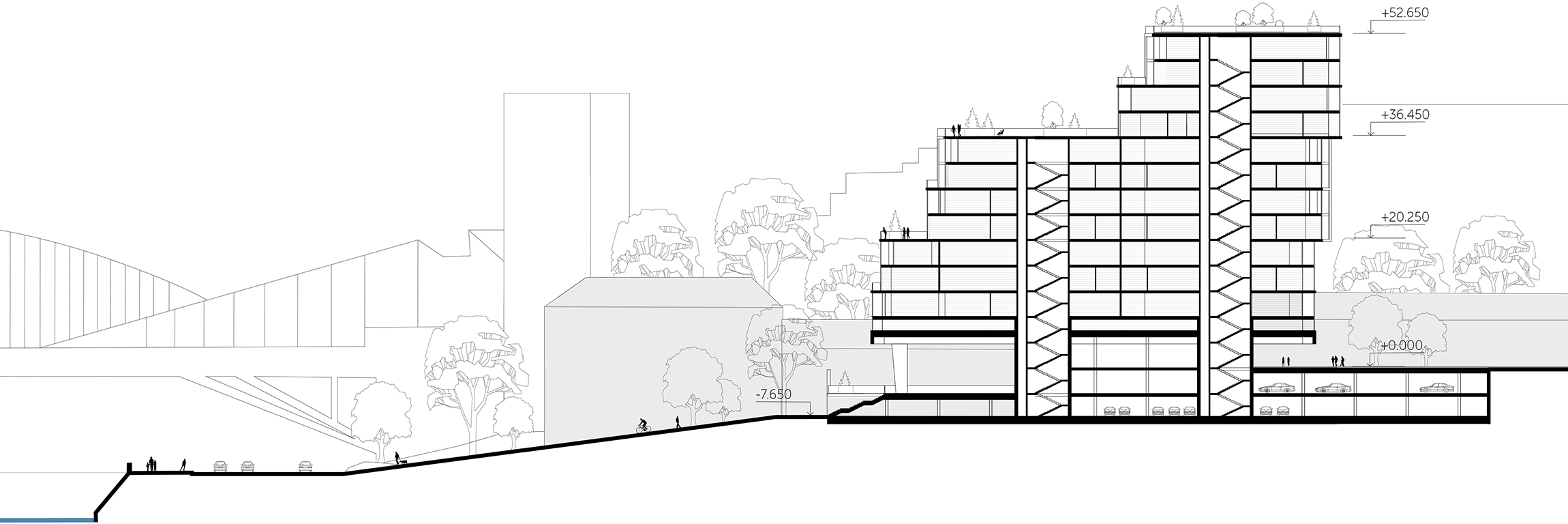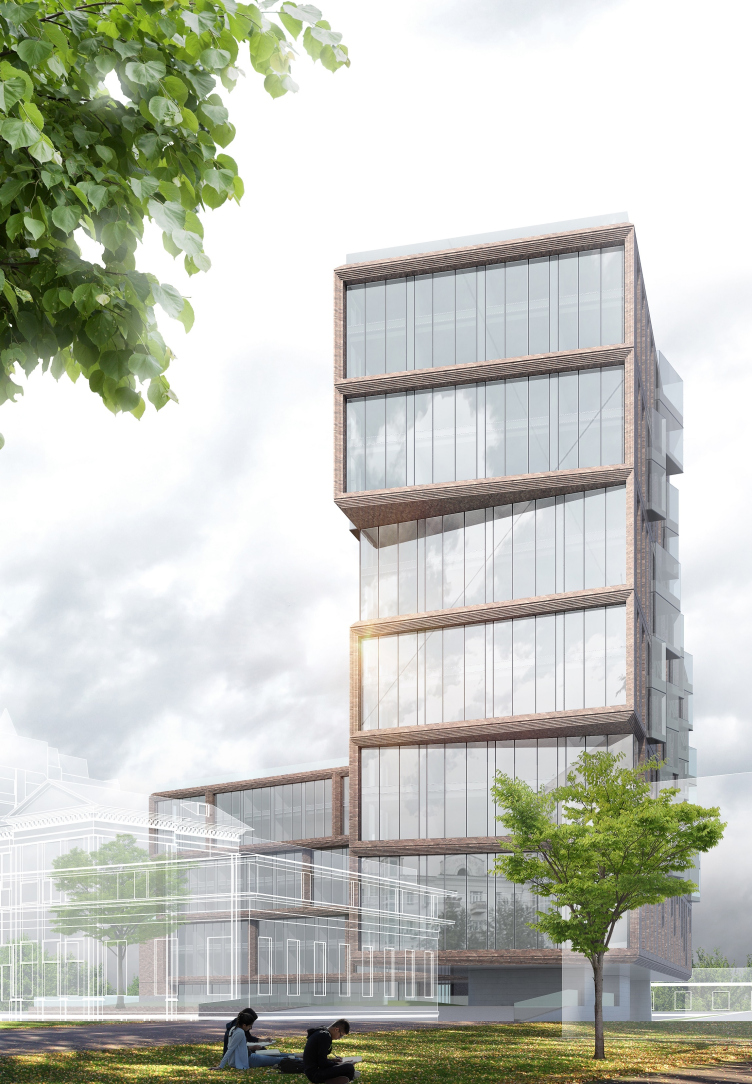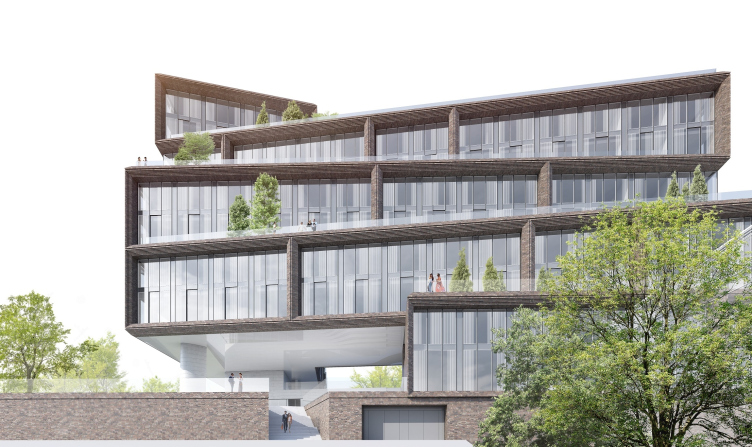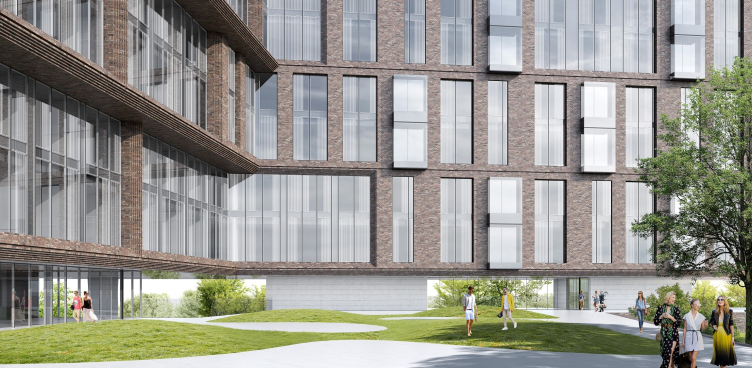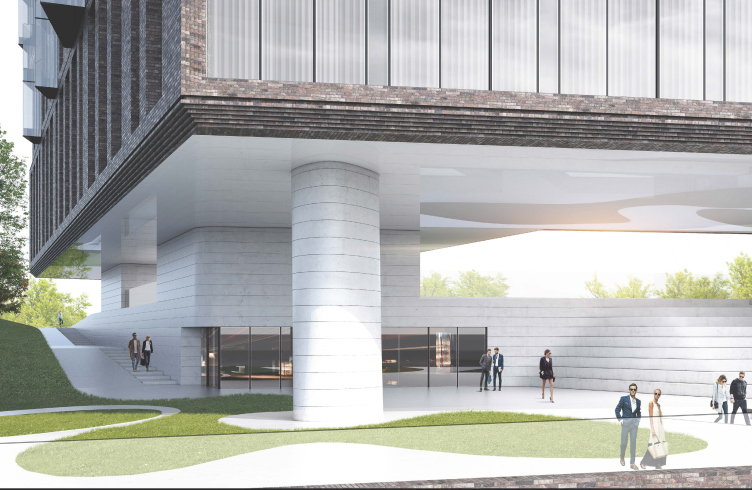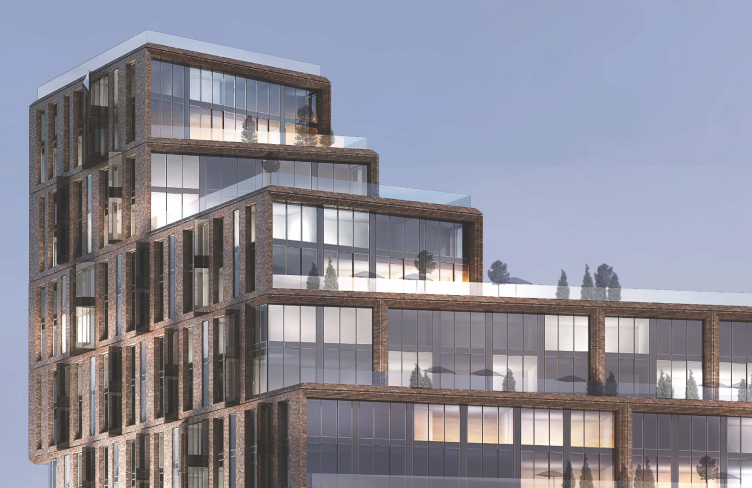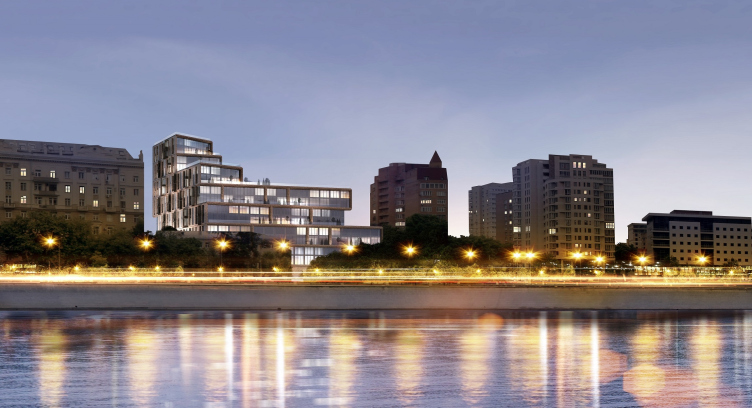The closed competition was organized by the developer company Vesper in 2017, its winners becoming “Tsimailo, Lyashenko and Partners” in collaboration with the French company Antonini Darmon; currently, they are still working on this project. The project by ATRIUM, which is covered in this article, was one of the participants of the competition.
***
A Third Point
In Moscow, there are several areas that are commonly considered to be the most prestigious among the buyers of real property. Still quite recently, this list was topped by Ostozhenka, but then it was slowly pushed back off the leading position by the areas of Patriarshie Ponds and Khamovniki. The latter is currently rated as better than the others and at the same time having a better potential for further growth. Unlike the other two “points of invisible attraction”, the southeast bend of the Moskva River combines several customer-coveted factors at once: transport accessibility, highly developed infrastructure, relatively decent ecological situation, and the presence of recreational areas. Now add to this the quickly vacating industrial parks, including the ones that are situated along the Savvinskaya Embankment, and you will get a residential area that in all probability will attract, within the next five to ten years, the operation of all the Russia’s top architectural firms. Actually, the trend is already becoming obvious. And it comes as no surprise that a number of developers are already using the format of closed tenders or competitions to invite the nation’s leading architectural companies for choosing the concepts for building on this promising land.
"Z-House" residential complex © ATRIUM
"Z-House" residential complex © ATRIUM
Express Testing
Vesper, which belongs to the circle of developers who prefer to organize invite-only competitions, in 2016 invited a few architectural teams to find the optimum solution and test their preliminary marketing calculations. Having a general understanding of what kind of project could satisfy the needs of the city and at the same time be in market demand, Vesper decided to conduct a series of express tests of its perspective vision. Because there is always a chance that you will find a more effective and “selling” solution that will increase the return on investment. The invited participants had a month to come up with a concept that would provide for a rigorously stipulated yield of square meters and other parameters stipulated by the city. At the same time, the volumetric and planning solutions were up to the architects who were free to make any sorts of experiments.
"Z-House" residential complex. View of the future construction site © ATRIUM
The participants list of the competition included the architectural firm ATRIUM, quite familiar with the format of closed competitions. Anton Nadtochiy comments on this practice: “I suppose that the system of closed competitions is the most effective for the developer because it helps to achieve the best results in the shortest possible time. The client invites the best teams that will not only propose a high-quality idea but also will be able to implement it. In this case, the clients get the concepts that show various authors’ strategies that are sometimes even one step ahead of the hot trends of the market; they may come up with the next big thing. Taking part in such competitions, it is always interesting to us to show our vision, get our colleagues’ opinion about it, and struggle for the actual commission”.
Not an Accordion
The land site that the future elite residential complex got to be built upon was far from an easy one. It was far from easy both in terms of the history of the place and in terms of the mottled surroundings and various obstacles on the path to the perfect project.
"Z-House" residential complex. Location plan © ATRIUM
First of all, the architects had to find a way to inscribe the elite housing complex into a land site of challenging configuration, already cramped by already existing buildings, these being: a two-story building of Mosvodokanal and non-residential 4-story house that stood between the future housing complex and the waterfront, a 12-story brick tower built in the 1990’s and a four-story building of the “Correction and Development Center”, standing along the 2nd Truzhenikov Alley, and a whole scattering of other two and three story affairs of different purposes and in different conditions. This “gentleman set” of encumbrances was added by a more than 8 meters height difference. After the architects methodically stepped back from the site boundaries, considering the fire lanes and the insolation parameters, they got a construction blueprint forming an L-shaped building with wings of virtually equal length, one of which ran parallel to the embankment, and the other ran into the depth of the land. The inner territory was allotted for a small green yard. The underground parking garage was accessed from the top, from the side of the 1st Truzhenikov Alley.
"Z-House" residential complex. Plan at the ± 0.000 mark © ATRIUM
As for the history of the place, the main “theme” was set by... a local “Workers and Peasants Red Army” Russian accordion factory that once was there. Little was left of its facilities, and the all but derelict building gave little promise of any renovation possibility. On the other hand, the literary component opened up before the architects a great expanse of interpretations. This specialization, so rare these days, due to its sheer juiciness just had to be rejected in the architecture of the complex one way or another. The architects confess that the first attempts to convert the shape of this musical instrument into a volumetric solution were unsuccessful. Playing the accordion turned out to be much more of a trick than they originally thought.
Seaside Resort Style
The solution was found thanks to yet another key feature of the place – its proximity to the river and an opportunity to make the river view one of the most valuable competitive edges to the potential buyers. In order to achieve that effect, the architects opted out of the traditional configuration of the building in favor of a composition that is more commonly spread in different latitudes, and with different views, too. Instead of a usual vertical façade, there came a stepping structure, receding in tiers into the depth of the site, thanks to which the architects got an opportunity to both open up the river views for the apartments of the lateral wings, and to create a system of open terraces, which could be used by the residents of the apartments opening up on them.
"Z-House" residential complex. © ATRIUM
Such structures are characteristic of seaside resorts. This is the way most seaside hotels are built, for whose guests it is important to spend part of their vacation time sitting on the terrace with a view of the boundless sea expanses. For the Moscow realities, the view of the grayish waves of the Moskva River and the perspective of the industrial parks lying along the Berezhkovskaya Embankment and beyond, with the giant of the Moscow City business center propping up the low clouds, is quite comparable and competitive to an imaginary sea view. Or so decided the ATRIUM architects who placed their bet on the seaside resort type of architecture, all the more so because in the non-rhythmic zigzags (hence the “Z-House” name of the complex) and the stairs of the terraced building one can see, with some desire and imagination, the analogy with the opening bellows of an accordion. Quod erat demonstrandum.
"Z-House" residential complex. Concept © ATRIUM
"Z-House" residential complex. Concept © ATRIUM
"Z-House" residential complex. Concept © ATRIUM
"Z-House" residential complex. Concept © ATRIUM
"Z-House" residential complex. Concept © ATRIUM
"Z-House" residential complex. Concept © ATRIUM
"Z-House" residential complex © ATRIUM
A Collection of Bonuses
As a result of superimposition of history and literature on the geology, with an extra pressure from the economics, the architects were able to crystallize a logic and living system of a tiered building, in which each of its elements, including the main volumetric, layout planning, and façade solutions are dictated by the desire to provide the future residents with a maximum set of preferences, connected with the complex’s situation and the views that it commands.
"Z-House" residential complex © ATRIUM
"Z-House" residential complex. Plan of the 2-3 floor © ATRIUM
The wings of the complex are set and an angle that is slightly greater than 90 degrees – this was done to provide the residents of the lateral wing with a wider river view. This same purpose is served by small glass bay windows that stand out at a skewed angle beyond the façade surface on the inner and outer side of the lateral unit. On the inside, they appear on the bottom floors, where, above the lowered section of the longitudinal wing, the main panorama opens up.
"Z-House" residential complex © ATRIUM
"Z-House" residential complex © ATRIUM
The staircase and elevator nuclei are concentrated along the inner façade. It is oriented southeast – in any other situation it would be left to residential properties but in this case the authors preferred to concentrate here the technical and utility zones in order to clear the outer “viewing” façade.
"Z-House" residential complex. Plan of the 6-7 floor © ATRIUM
"Z-House" residential complex. Plan of the 8-9 floor © ATRIUM
"Z-House" residential complex © ATRIUM
"Z-House" residential complex © ATRIUM
The façade decoration combines brick and stained glass windows. The balance between them is again determined by the view-commanding properties. The best views get maximum of glass. The façades that only command the views of the neighboring buildings have to settle for parity between the brick piers and two-story narrow stained glass windows, which are periodically replaced with glass bay windows.
"Z-House" residential complex © ATRIUM
As a compensation for the loss of the river view, the two side apartments on the bottom floors of the longitudinal unit are made in a format that is close to a townhouse. They have their own entrances from the street, two full-fledged floors, and individual terraces under the podium part.
"Z-House" residential complex © ATRIUM
The base floor of the complex is designed in such a way as to visually tie the inner yard of the complex with the world outside, which commands the river and the embankment. Making the most out of the height difference, the architects raised the main volume of the complex above the ground level, leaving, as supports, the bigger part of the first floor of the main unit and a small communication block with a lobby and two staircase and elevator blocks of the lateral wing. The space between the main volume and the podium is used as the public and recreational venues. The immediate connection between the waterfront and the yard is provided by the broad staircase that looks imposing enough to claim the role of the background for memorable photos that new residents may make before they move in.
Here is how Vera Butko comments on the idea of the end-to-end passage through the building: “We wanted to bring light and air into the composition, and connect the yard to the river. Thanks to this passage running through the main wing, we got a space that is at once protected and open to the outside world. A person is walking under this roof with huge cantilevered structures, and then he can get down to the street by a staircase. From any vantage point, we can see the passages to the waterfront, thus avoiding a feeling of isolation, a feeling of being cut away from the waterfront”.
"Z-House" residential complex © ATRIUM
The load from the seemingly hovering outer corner of the complex comes to an only single column that is decorated with polished white stone, thanks to which it looks almost dissolved in the enormous space between the brick-clad podium and the intermediate floor decorated by high-gloss white panels. The unusual combination of brick and light-gray decoration materials on the façades makes the complex look light to the point of being exquisite, putting one on the mind of the London quarters with their inevitable white window sashes framed in brickwork. In this façade play of the materials an important role is also played by the stained glass windows. For them, the architects proposed lighted glass panes with a slight mirror effect.
"Z-House" residential complex © ATRIUM
As one looks at the visualization of the complex, inscribed into the waterfront panorama, the first thing that meets the eye is the fact that the new building does not in the least violate the existing environment. The first line of the Savvinskaya Embankment consists of houses 9 to 12 stories high. Their variety and the absence of one single height standard does not allow us to speak about any sort of architectural ensemble comparable, for instance, with the architecture of the Frunzenskaya Embankment, but, still, one can see some certain architectural rhythm here. The solution proposed by ATRIUM supports this general rhythm, at the same time giving a still deeper development of the composition at the expense of the receding high-rise part and the lowering of the tiers towards the neighboring brick tower.
"Z-House" residential complex © ATRIUM




